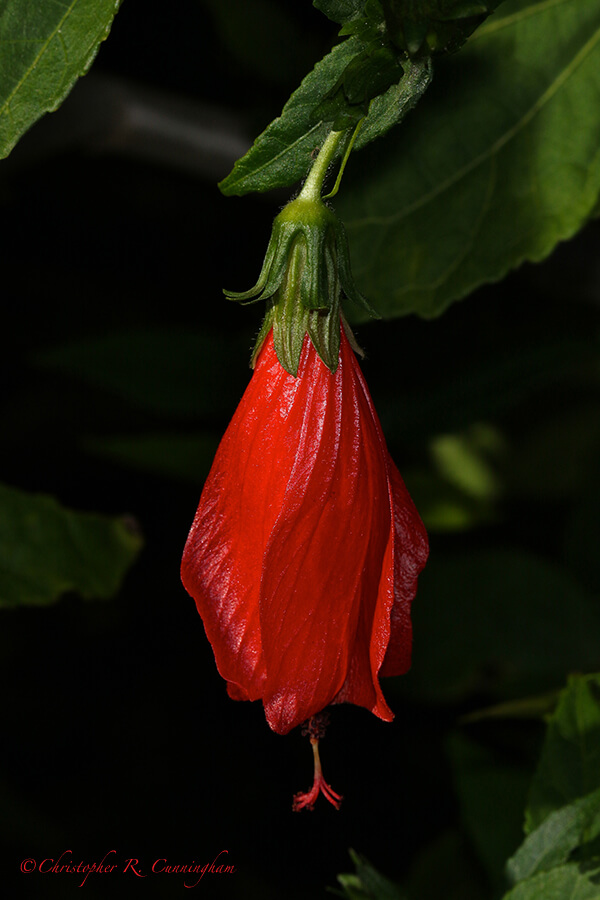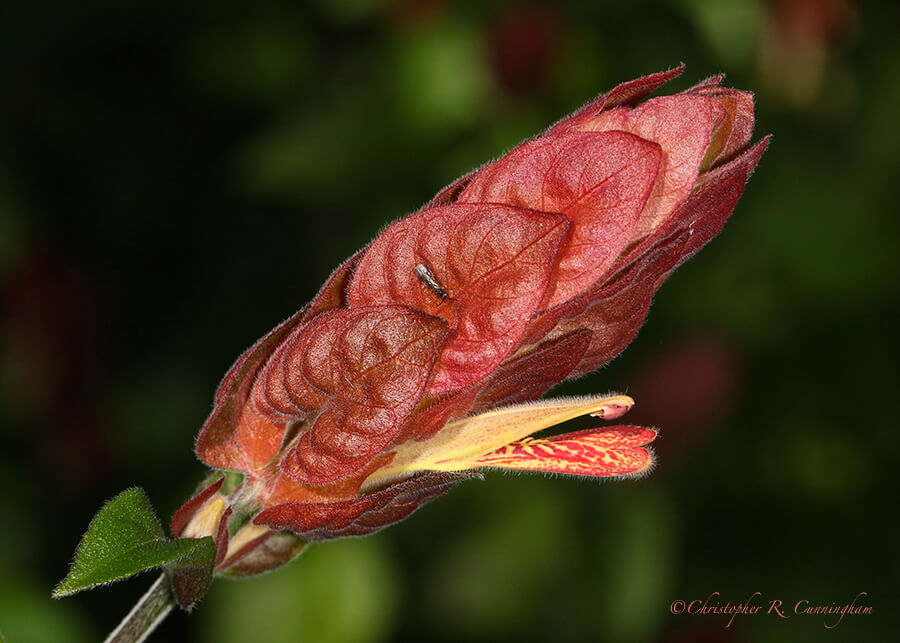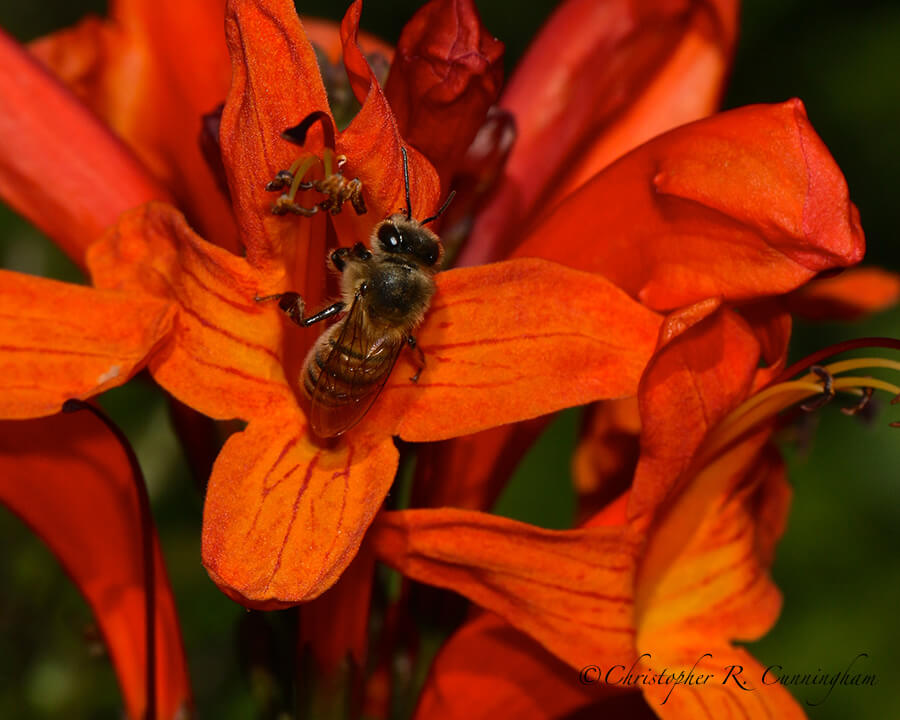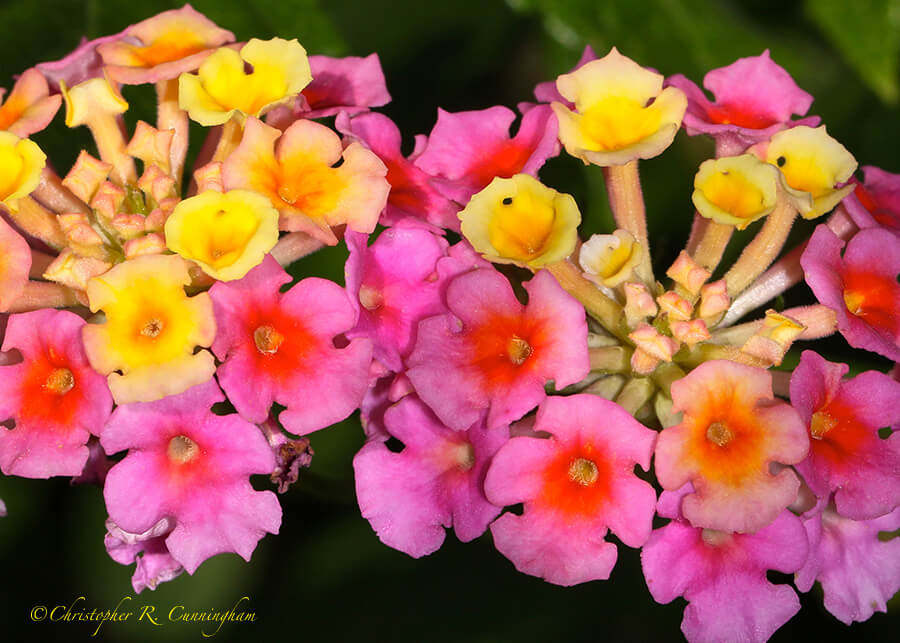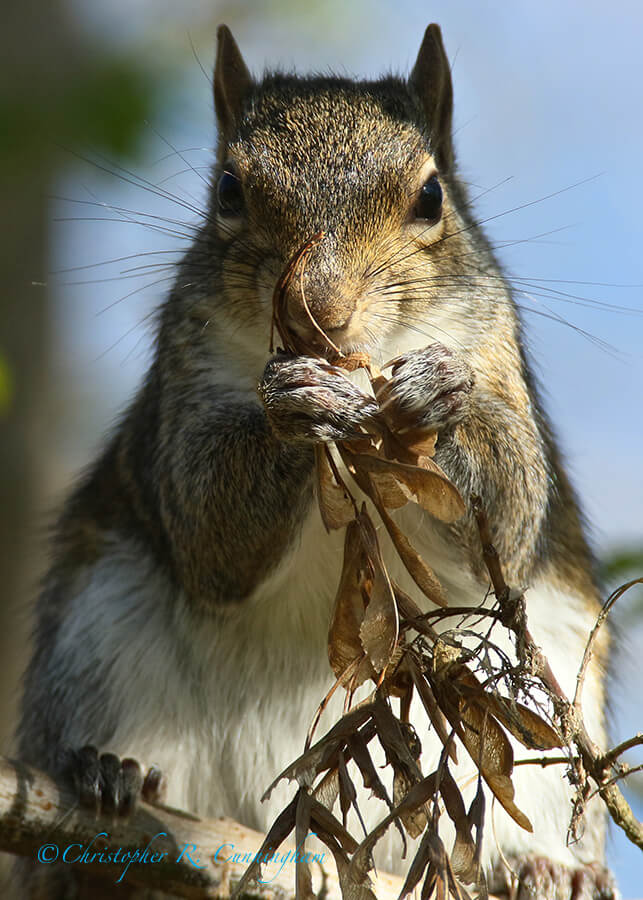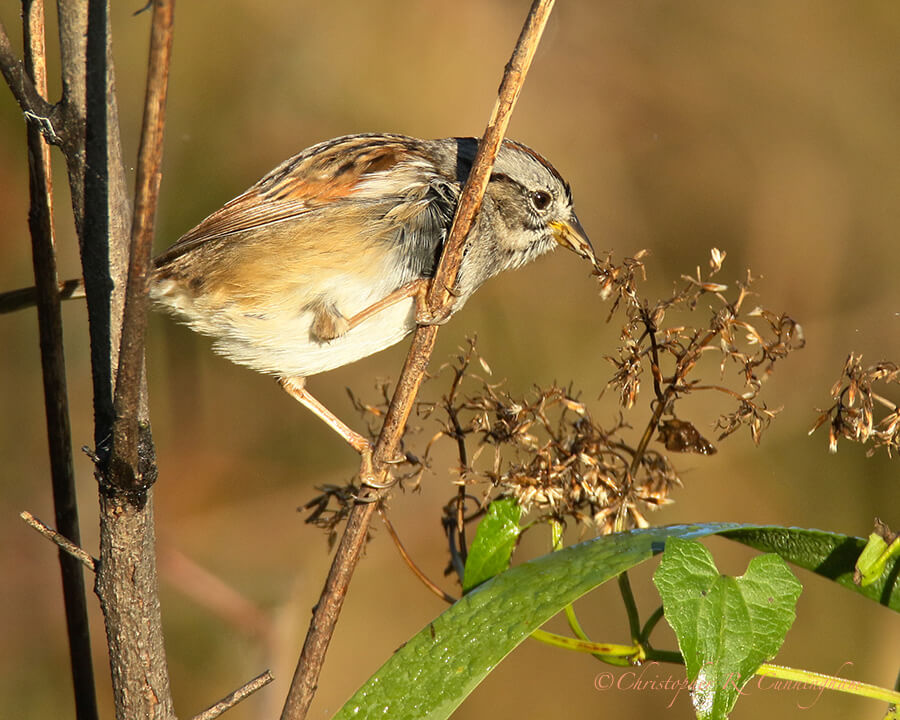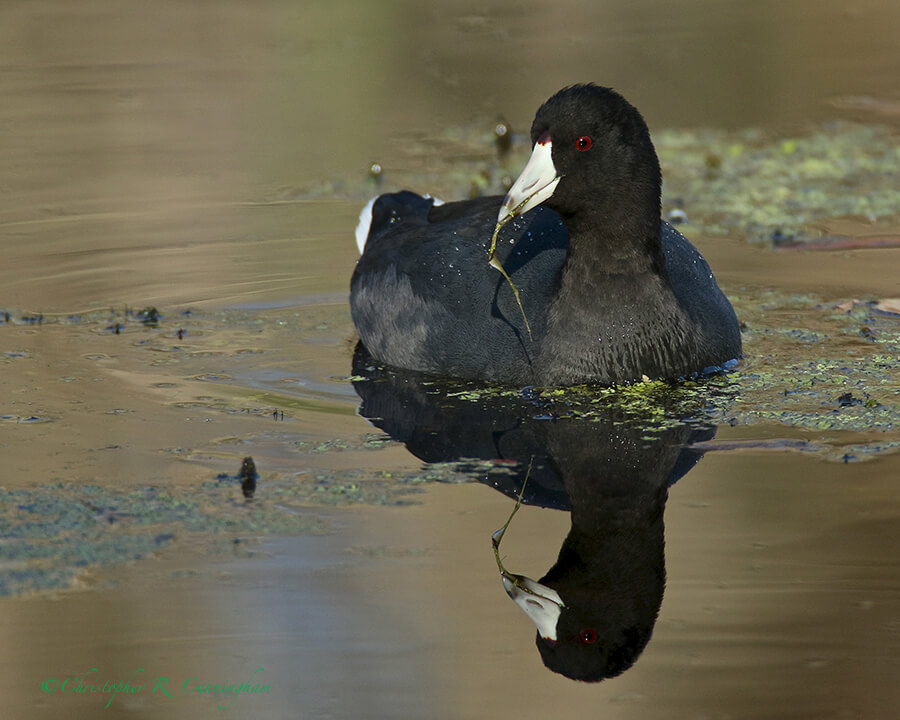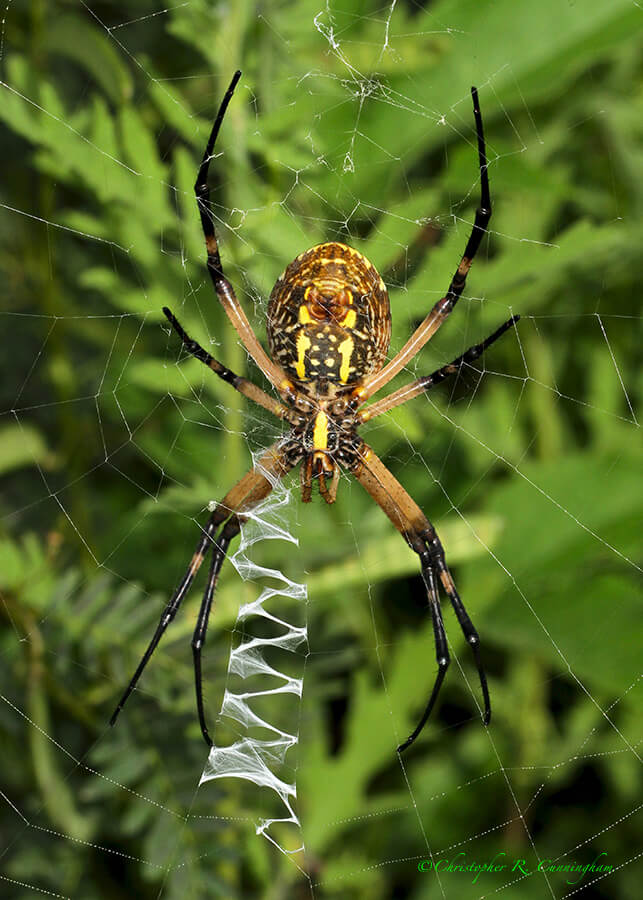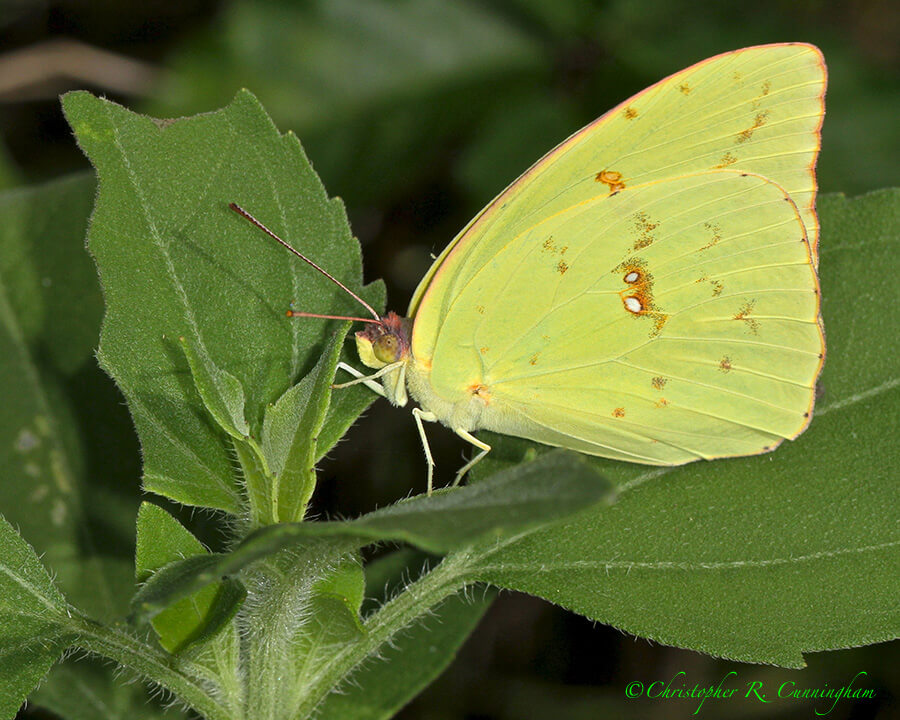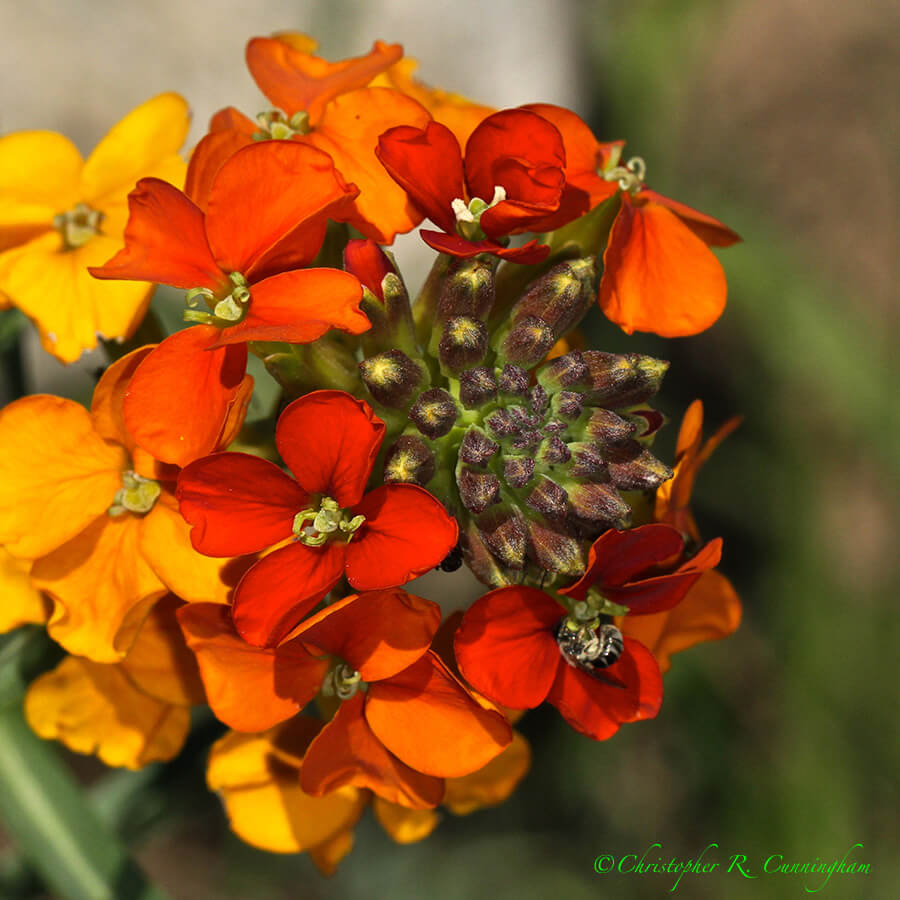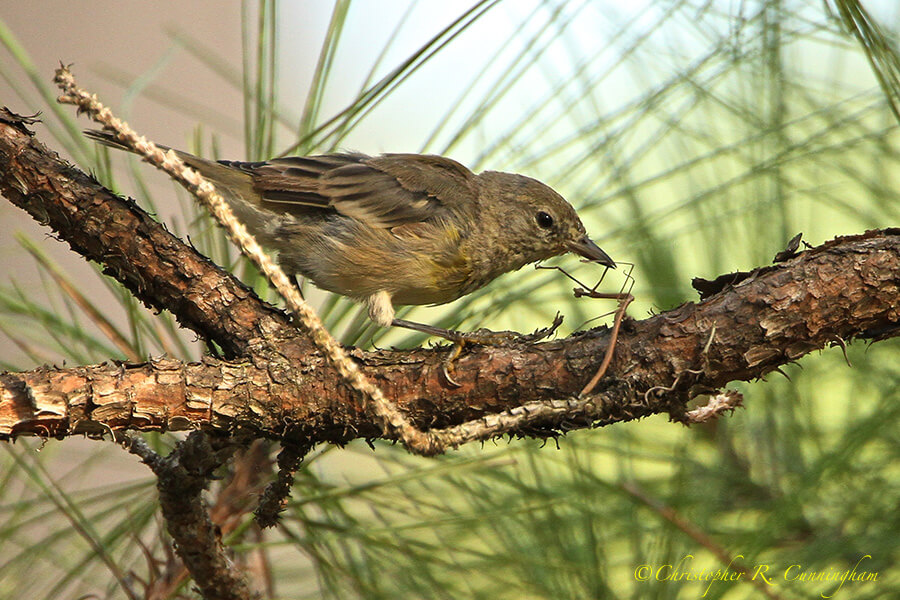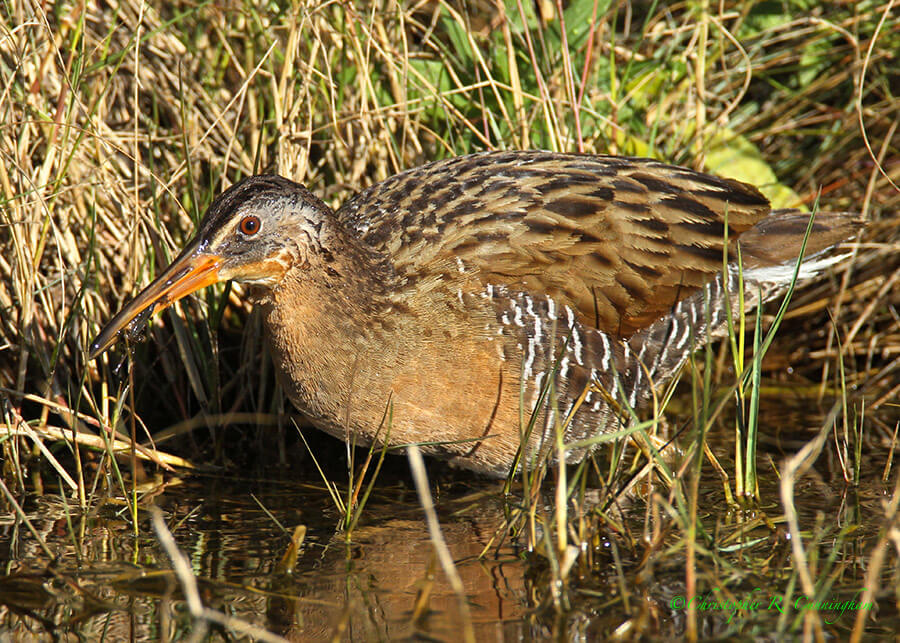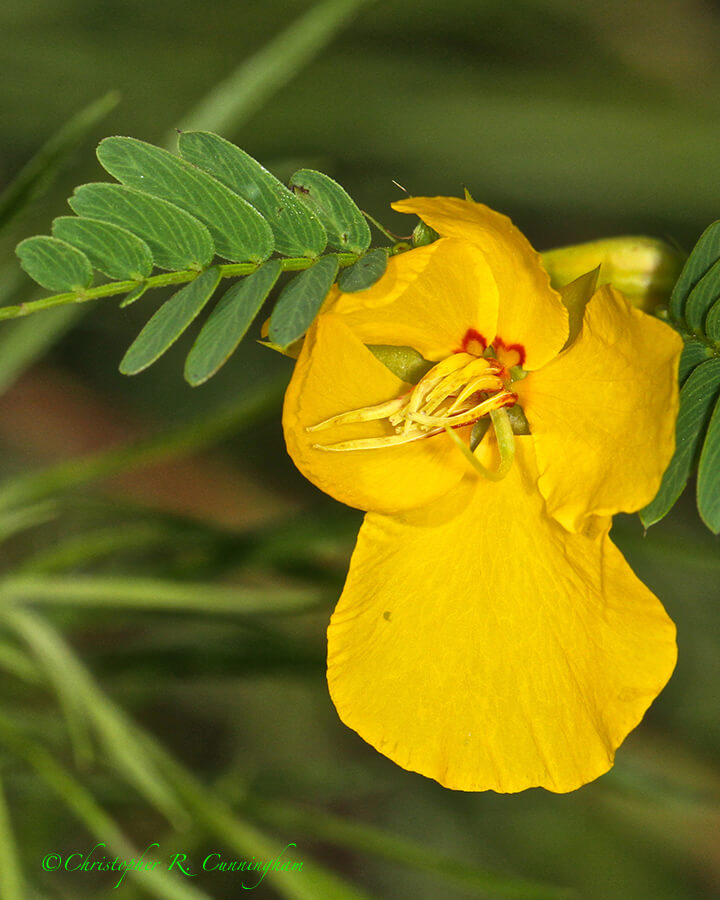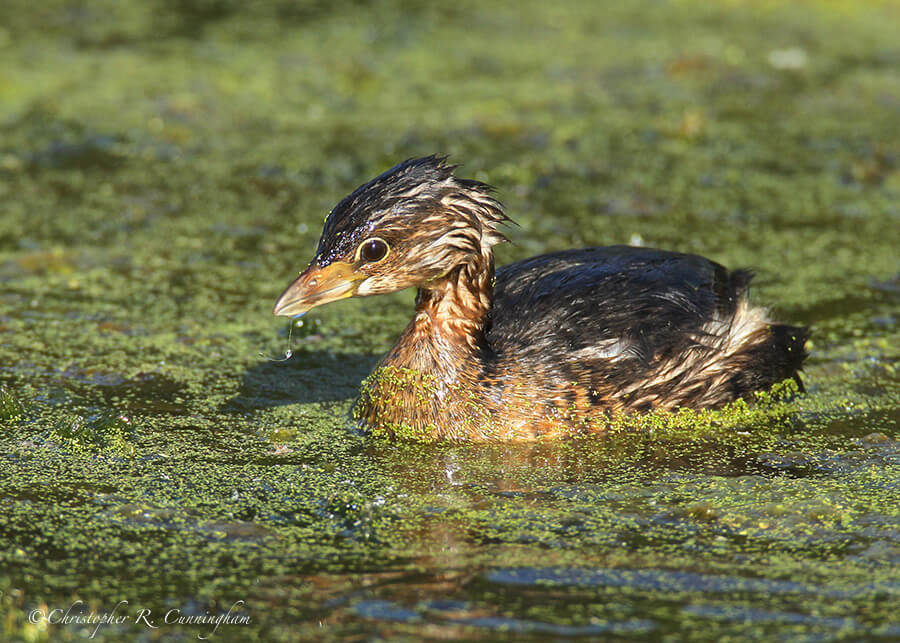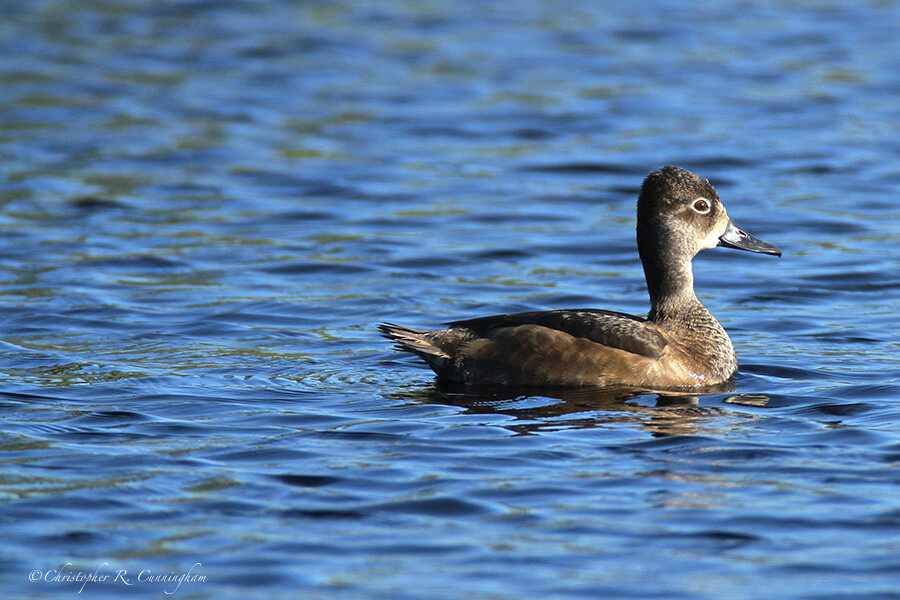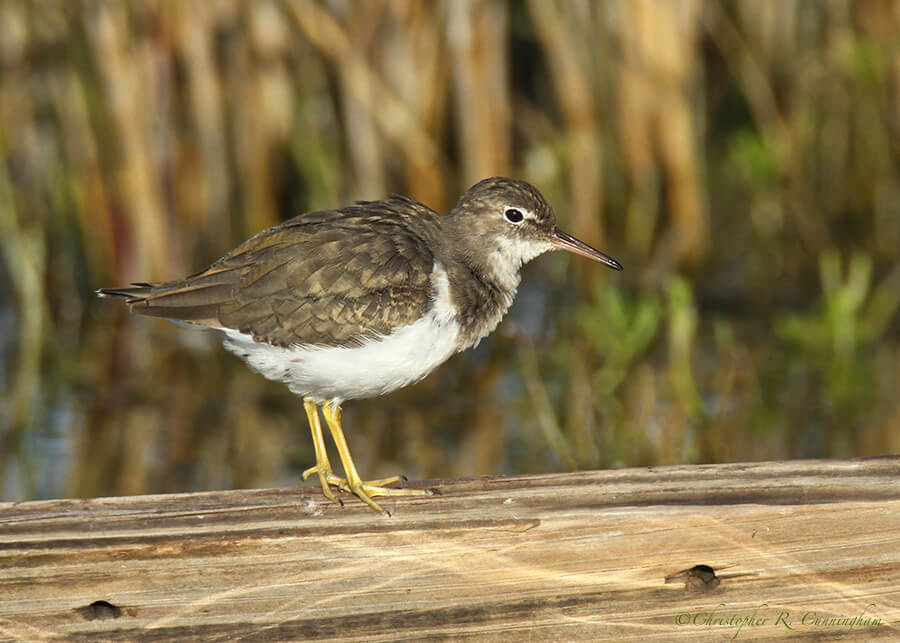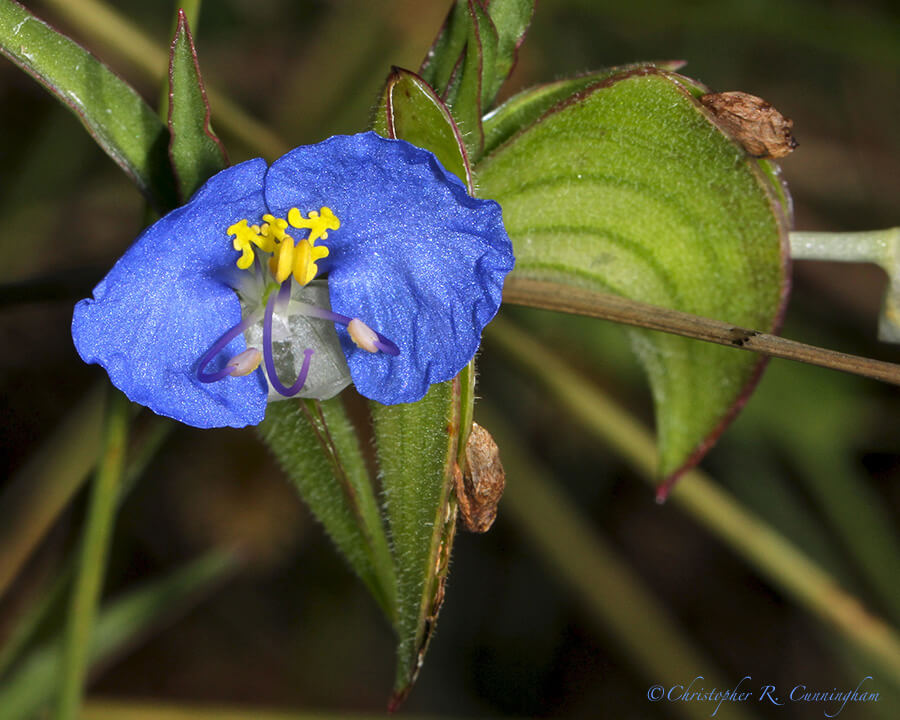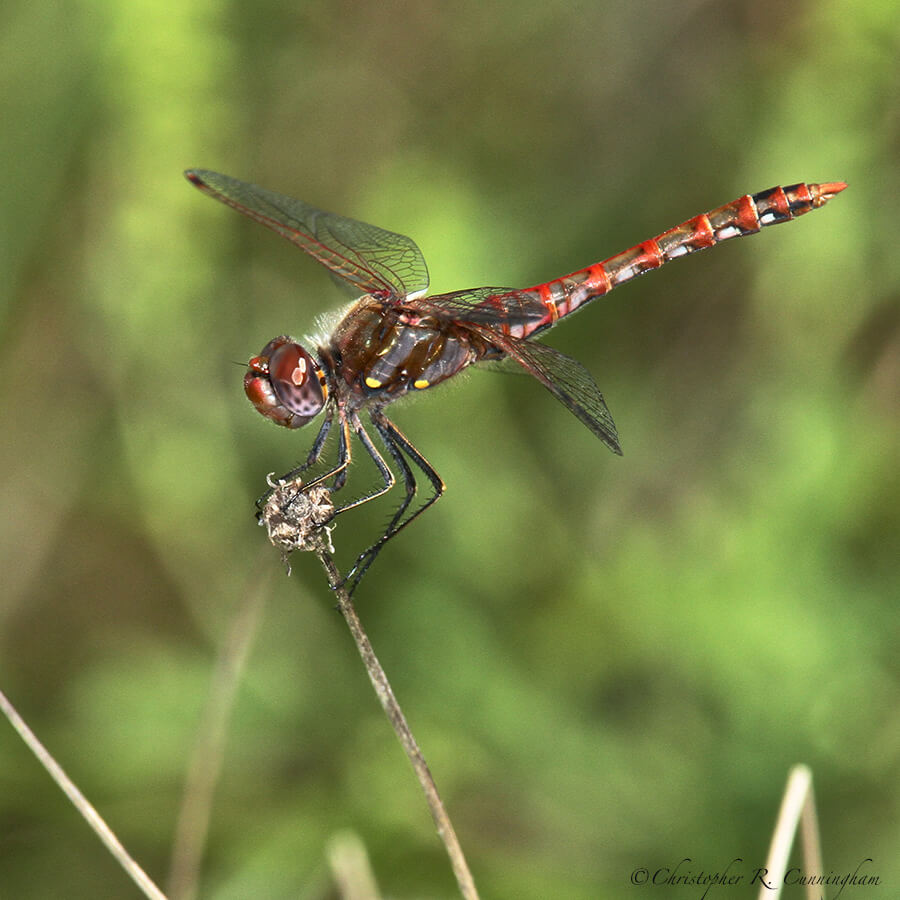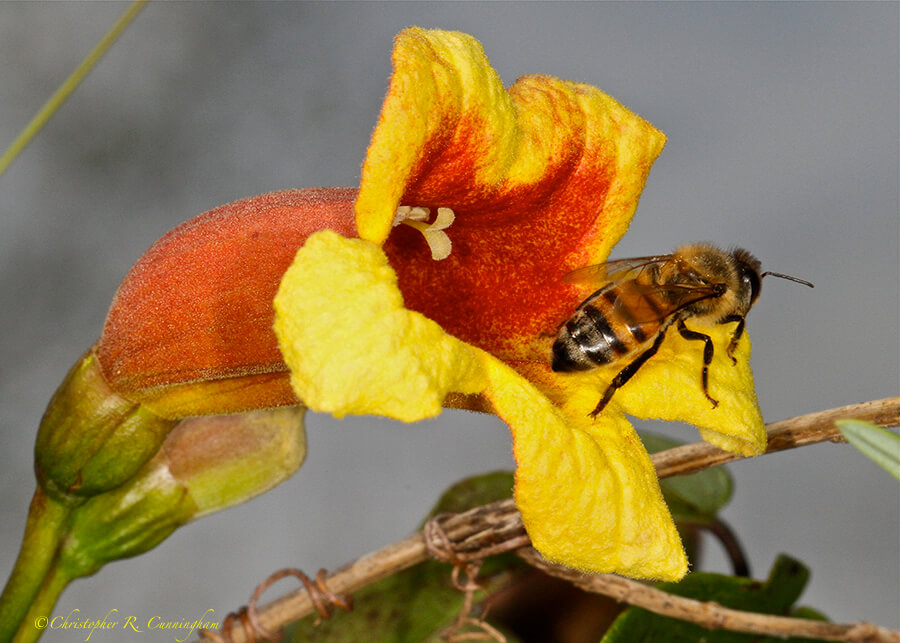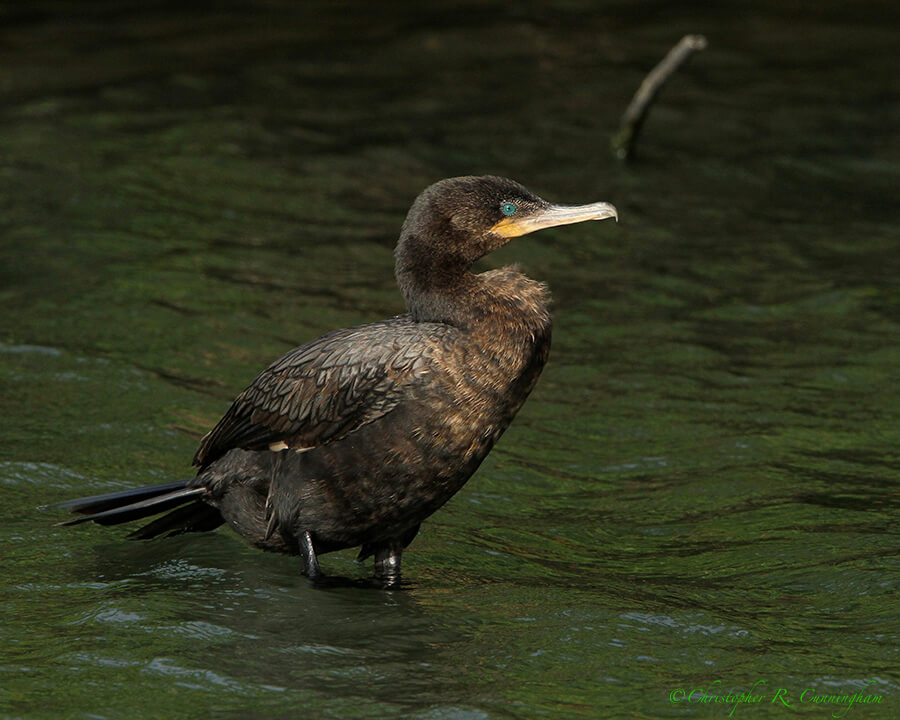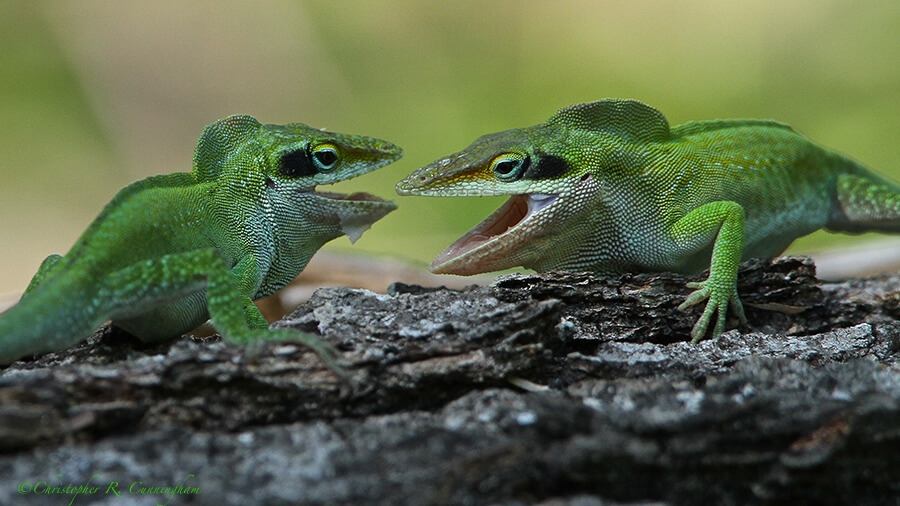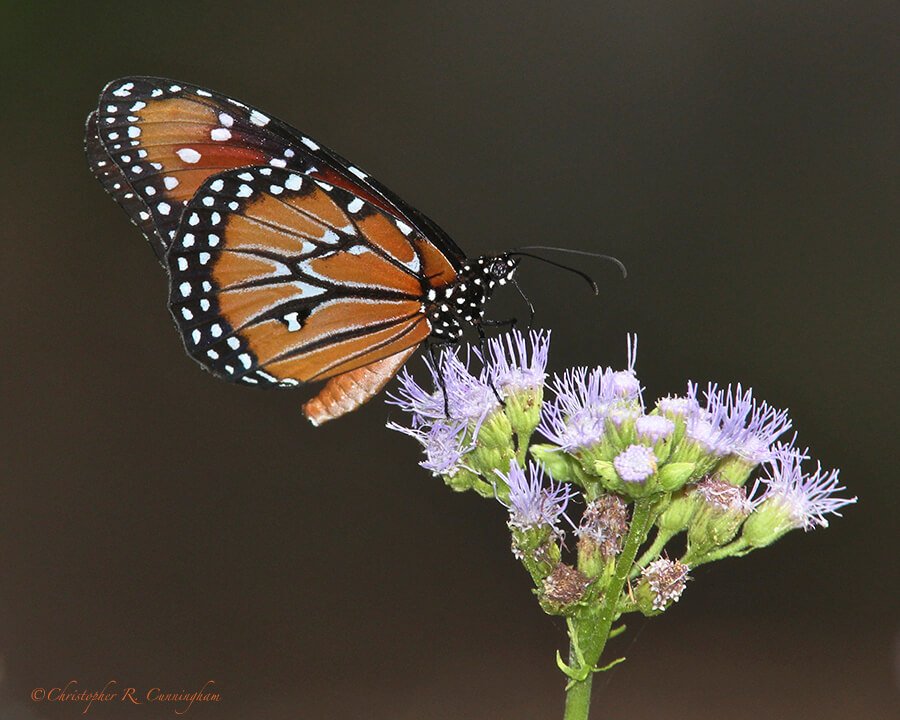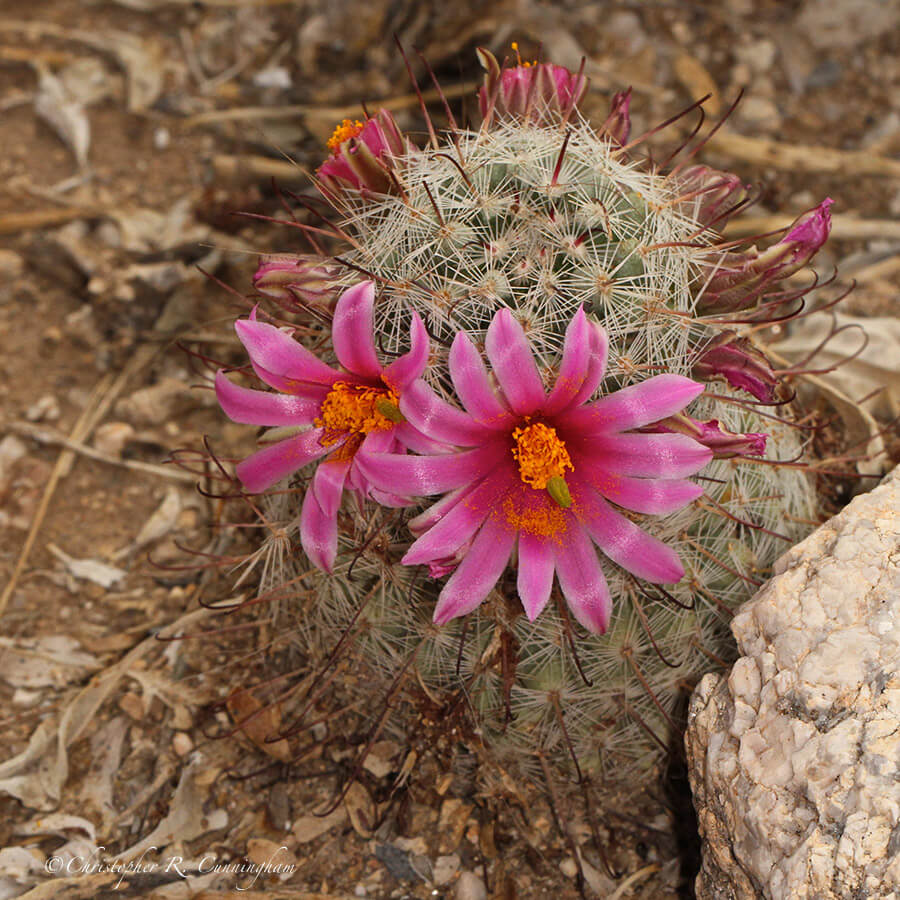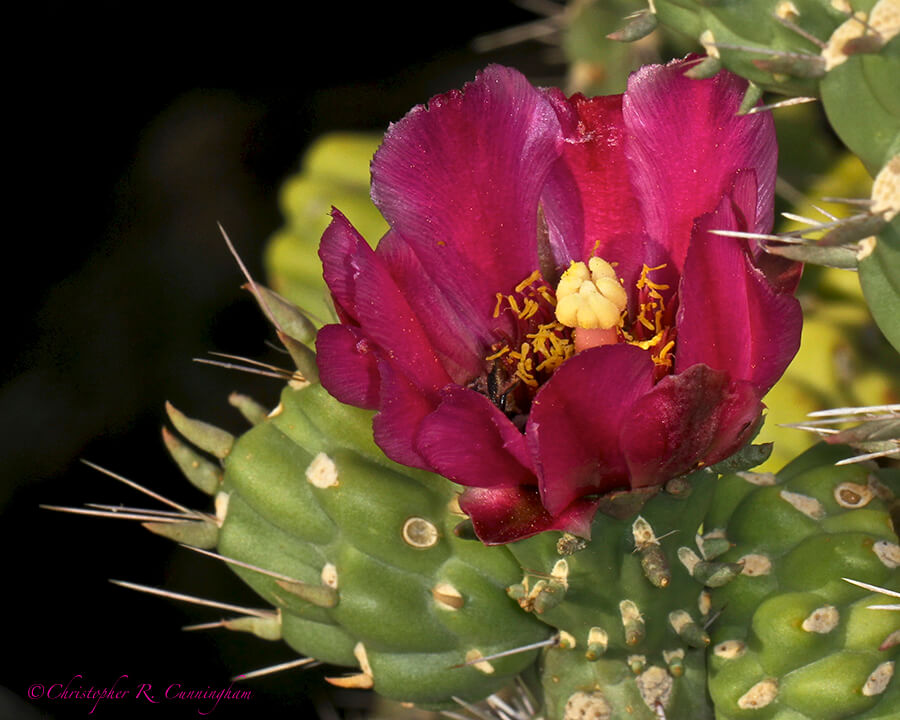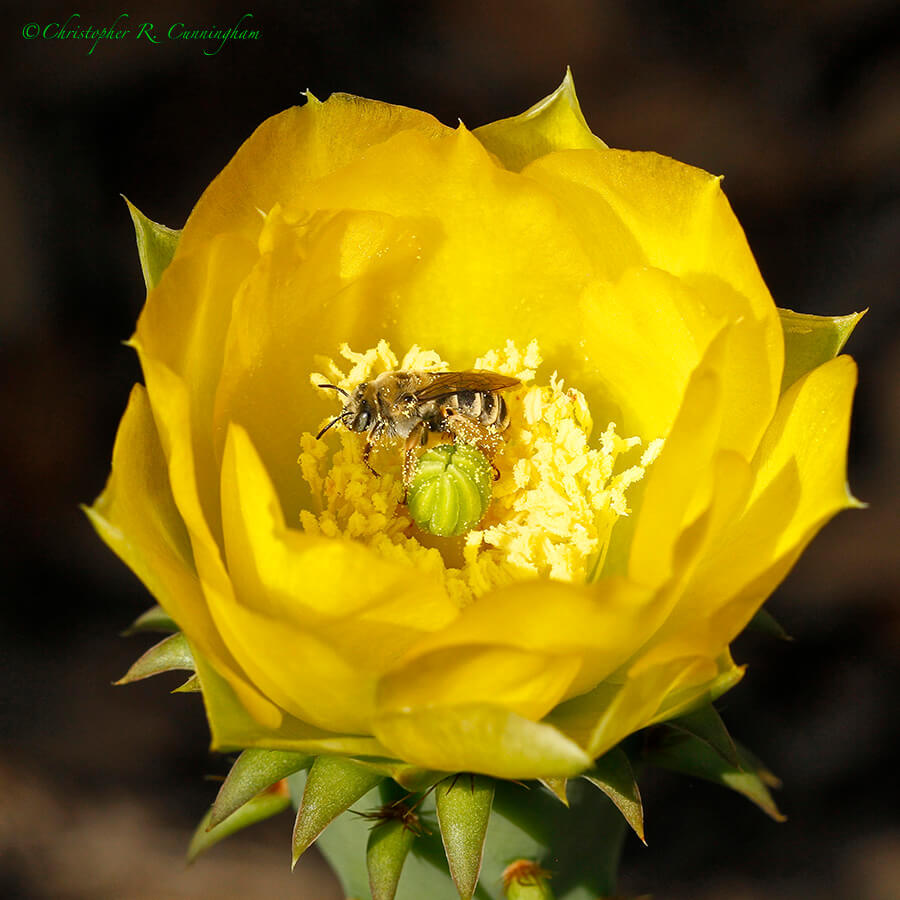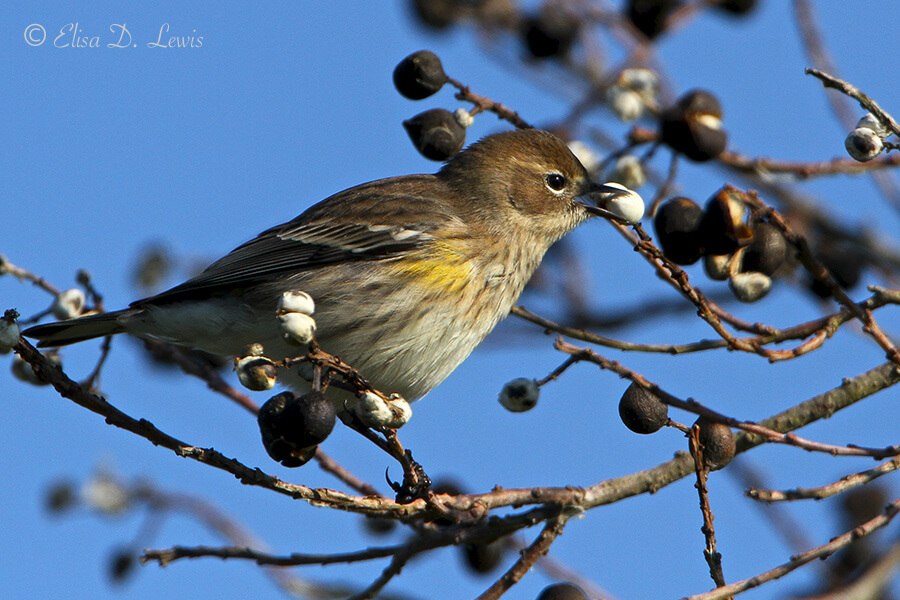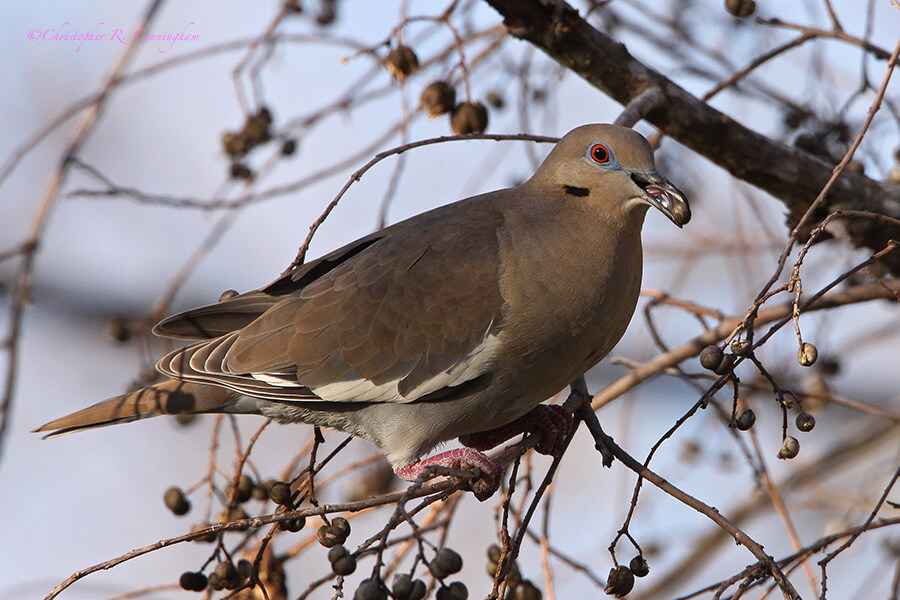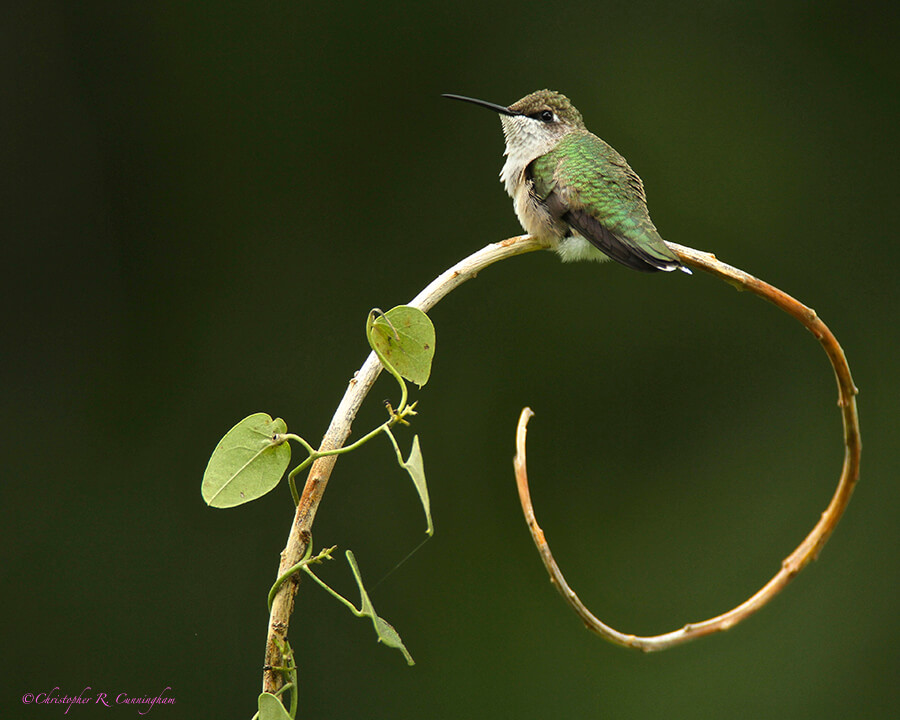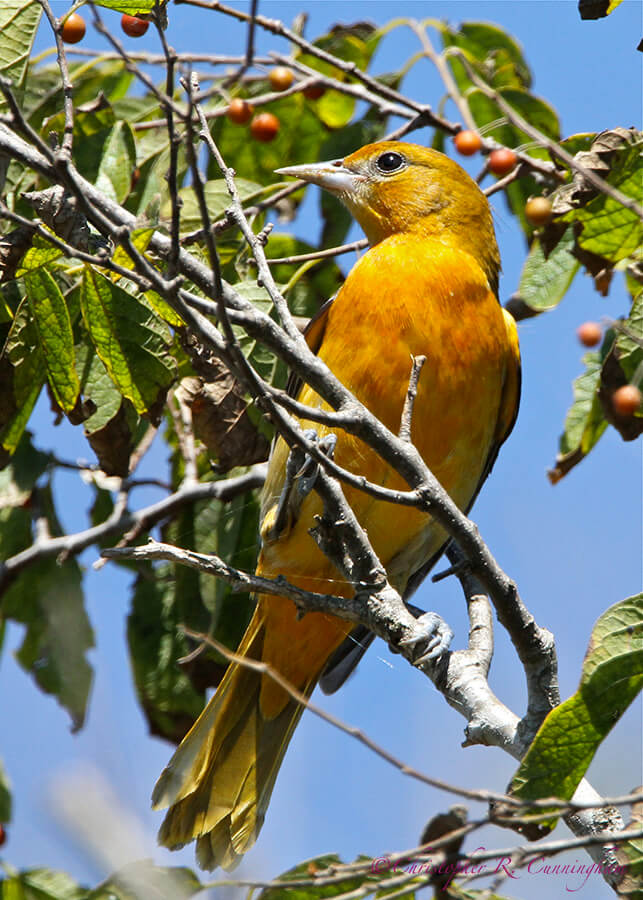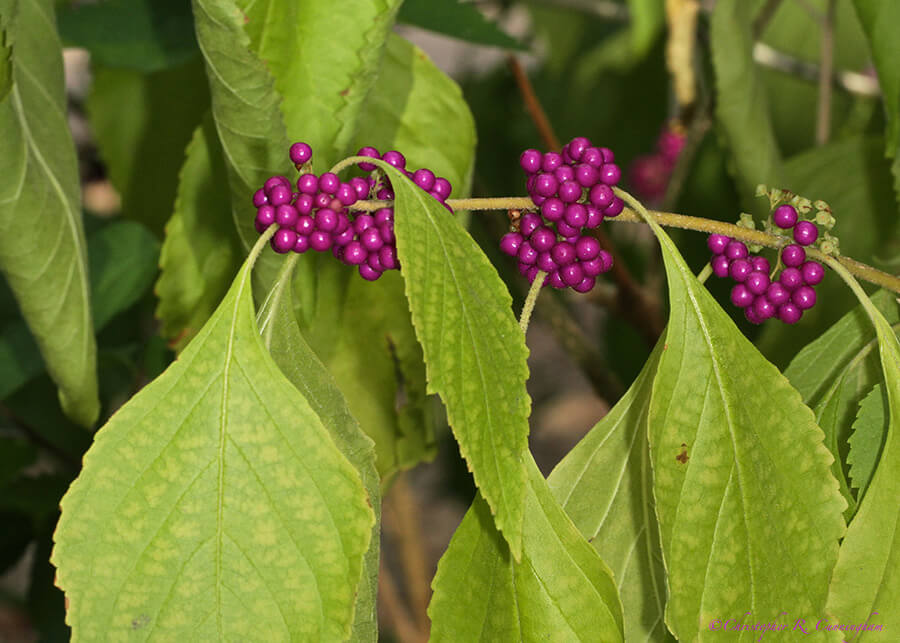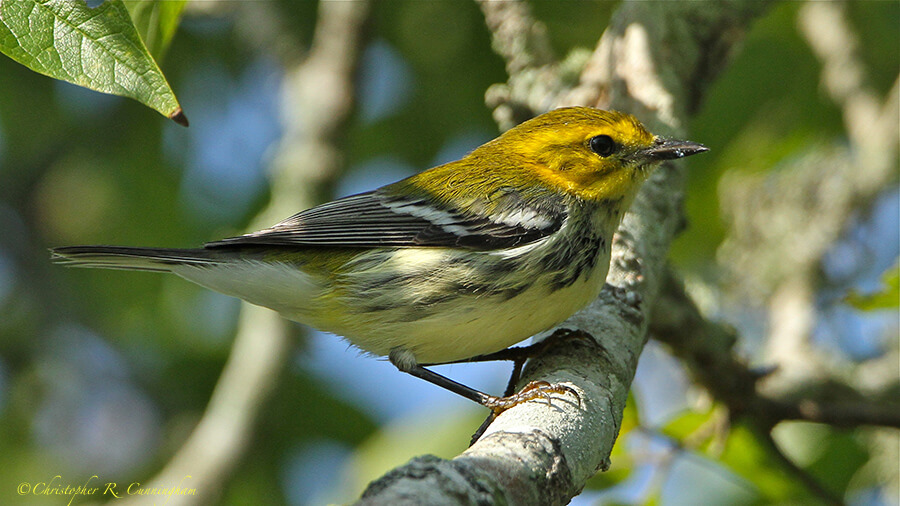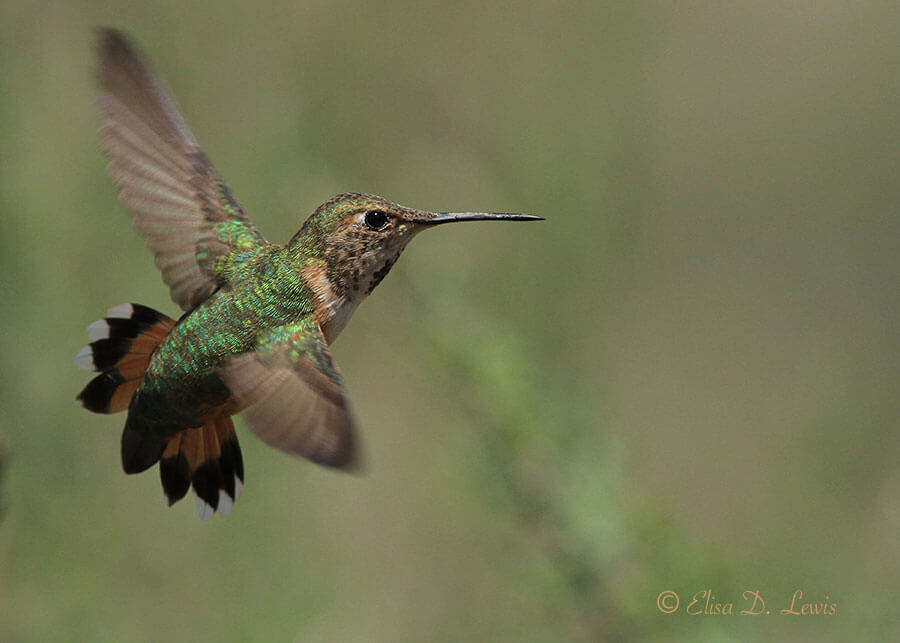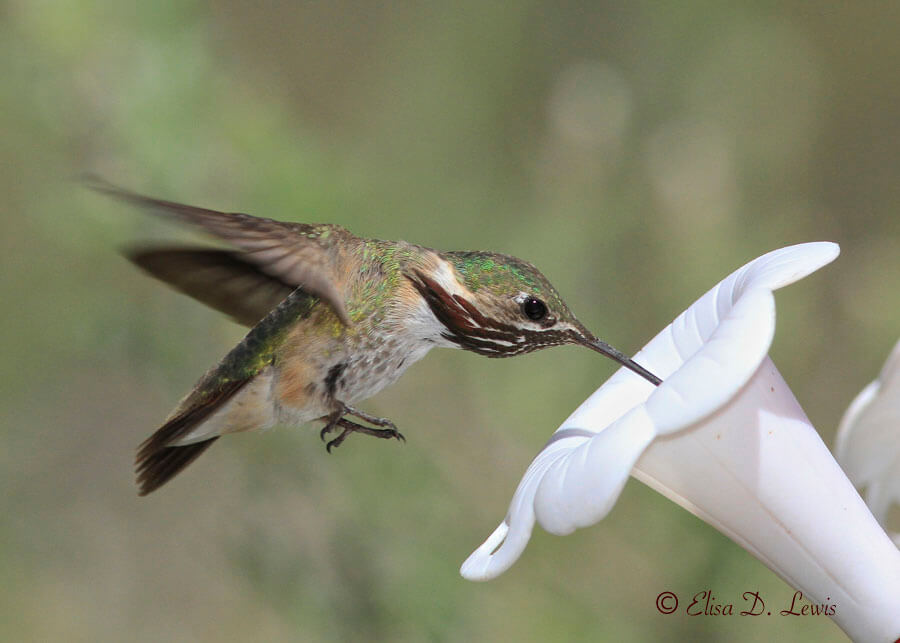Until I know this sure uncertainty, I’ll entertain the offered fallacy.–William Shakespeare, The Comedy of Errors
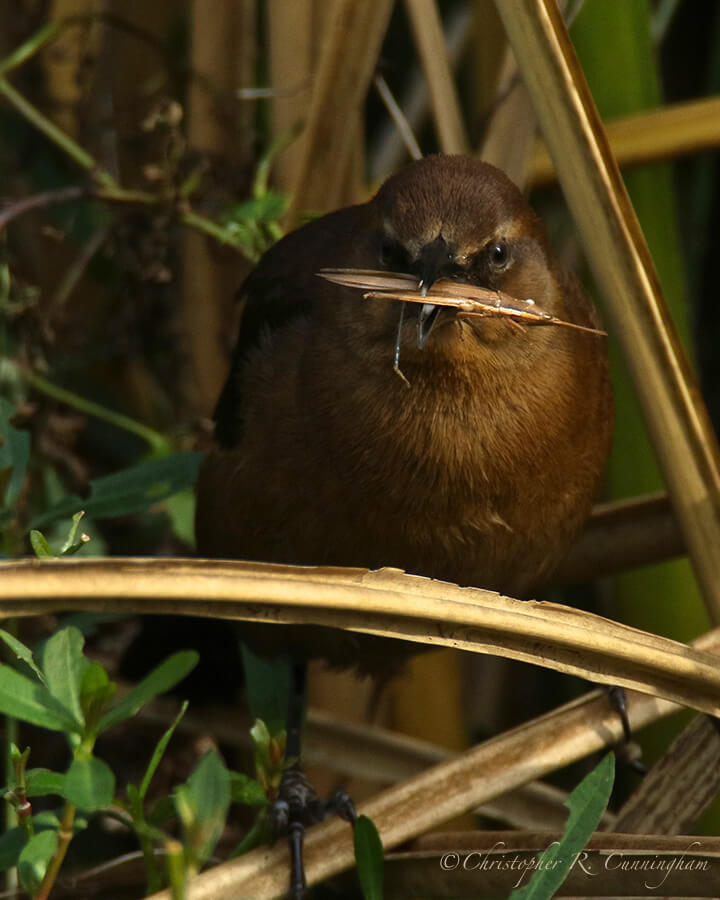
Birding is something I do alone, with Elisa, or with very small groups of people—so the impact and embarrassment of personal screw-ups has been limited. Field blunders have ranged from the minor (like calling a female Orchard Oriole a Prothonotary Warbler in front of the late Steve Gross) to silly, like hustling out the woods in grizzly country feeling like I was being hunted only to decide that it was all in my head! Probably.
In the imagination-getting-the-better-of-oneself scenario, a week or so ago I was on the levee between 40-acre and Pilant Lake when I heard a loud rustling coming from the rice on the edge of Pilant Lake. Whatever it was sounded big—and it sounded like there were several somethings. Would I see a row of feral pigs? Otters? Raccoons? Otters would be great! This could be exciting! A similar thing had happened before and a bobcat had poked its head out less than five yards in front of me!
So I fiddled with my gear in eager anticipation . . . when who popped out? A group of the noisiest grackles on the planet emerged from the vegetation, and they had nesting materials in their beaks. At least I got a few shots of that, I thought disappointedly. Later, while reviewing the images, I realized that it was not nesting materials that they had, but straw-colored katydids! The birds must have been in a line to flush out the insects. Without knowing it, I had likely observed avian cooperative hunting. I have seen Cattle Egrets doing much the same thing. So much for otters.
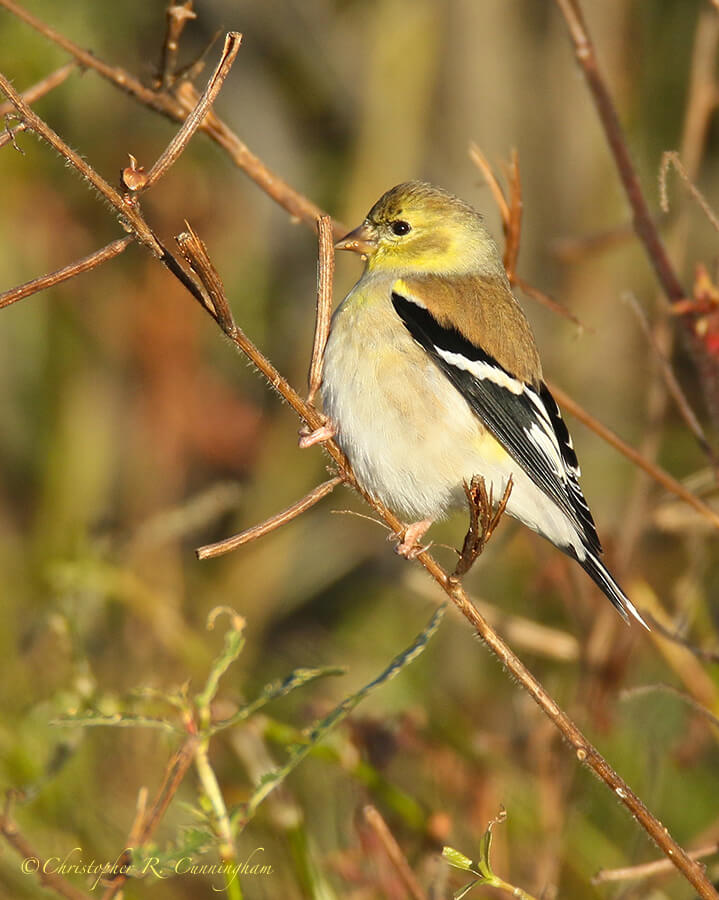
In the not-knowing-what-you’re-looking-at scenario, last week I was watching American Goldfinches chiseling into stems of an unidentified plant and plucking out tiny somethings. That’s weird, I thought, what could these birds be getting out of stems? Later, I brought up the question to a naturalist friend, and he quickly offered that insects had possibly infested the stems and the birds were simply fishing them out. But later while reviewing the images trying to identify the “insects,” I realized that the stems were not stems at all, but rather dried-out elongated seed pods, and the birds were (unsurprisingly) simply eating seeds! The whole conversation about insects in stems was like the Peanuts episode when Lucy and Linus wonder about how potato chips could migrate from Brazil (after misidentifying a potato chip as a beautiful yellow butterfly).
In my own defense, once in a while I see something unusual enough that I don’t feel silly when I misinterpret it. I remember photographing the Yellow-crowned Night-Heron below and feeling sorry that the poor animal had a growth on its lower bill. A few years later, while sifting through the archives I noted that it was not a growth, but rather a gar tooth that was protruding from the bill. The bird must have been hunting in the water when a gar bit it through the lower jaw. In the ensuing struggle, the tooth must have broken off.
Finally, this post reminds me of a question I often pose to myself: Do I see more when I am out photographing or when I am binocular birding? I’m pretty sure that I see more with binoculars alone because I’m not worrying about light, perspective, and so on. But then again, without images to check what I’ve been seeing, how do I really know that what I’ve been looking at it is what I thought I was looking at?
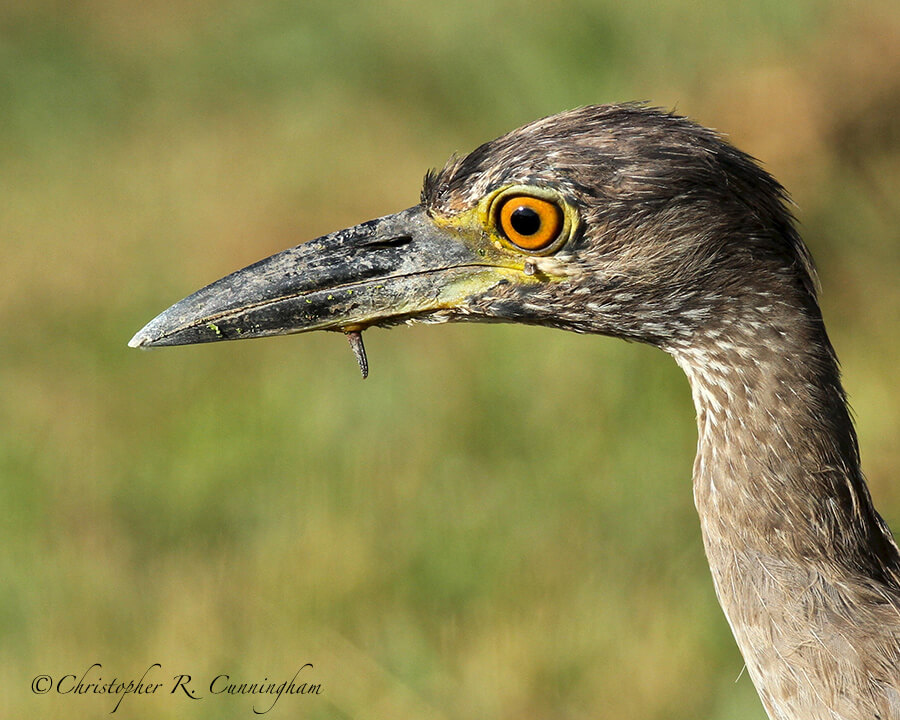
©2016 Christopher R. Cunningham. All rights reserved. No text or images may be duplicated or distributed without permission.
